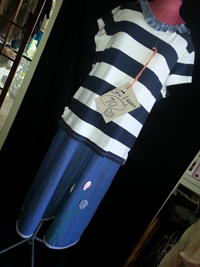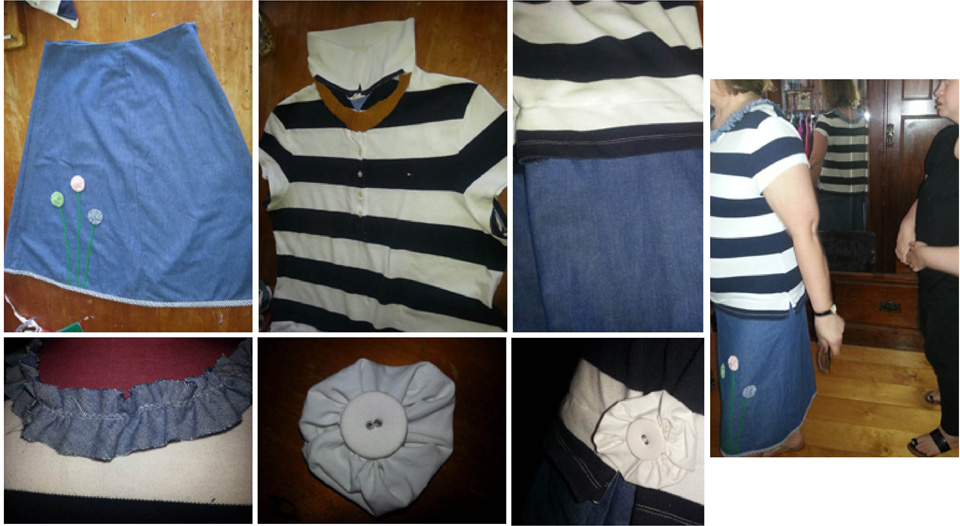
This dropped-waist dress was created by cropping the waistline from a zippered A-line skirt and sewing it to a reversed polo skirt sans collar.
We know charity op shops are bulging with perfectly good clothing. After pondering why so many quality garments are being moved on, I’ve come up with a theory. People are literally outgrowing them and need to upsize. Bingo.
There’s an obvious correlation between our bulging waistlines and the burgeoning mountain of waste clothing. Australia is ranked as one of the fattest nations in the developed world, with three in five people (over 60%) now overweight and that figure is growing all the time.
One of the reasons I sew is to adjust clothes to fit my changing shape. Most people don’t sew – and since clothing has become so cheap it is easy to just upsize by buying new and tossing out the too-tight old stuff.
In their book Plant Obesity How we’re eating ourselves and the planet to death, Garry Egger and Boyd Swinburn link obesity with consumerism and climate change. They suggest we can help ourselves by living a low-carbon lifestyle, changing our way of thinking about how we live as much as our actual behaviours.
They say (pg 104): “Some obvious options for this include growing your own food or buying from local growers’ markets, only eating foods with low production and transport costs and using person-power rather than machine-power whenever possible. Obscure as it may sound, it also means reducing air-conditioning and heating, not so much for the effects on body weight, but on carbon emissions.”
Another suggestion is to think of movement as an opportunity, not an inconvenience – use personal energy as opposed to machine-related energy. “Walking or cycling instead of driving, using stairs instead of lifts or escalators, standing instead of sitting, are all means of recovering the estimated 1000 calories per day lost in the transition from hunter-gatherer to industrialised sedentary worker.”
Their third suggestion is a shift towards vegetarianism and a reduction in portion size of meals as a way of reducing both obesity and the environmental carbon footprint.
They conclude we have passed our sweet spot in economic growth in developed countries: “Now is the time to develop an economic system that more seriously considers human health as well as climate change as dependent variables – before the sweet spot begins to turn sour.”
We individually are responsible for optimising our health and wellbeing – in a physical sense that’s about eating wholesome food and choosing an active lifestyle. There’s growing interest in local food production and home cooking and more potential for home sewing and re-sewing as a way of taking charge of our clothing needs rather than be dependent on mysterious supply chains with trends and choices dictated by others.
Upcycling existing cotton clothing for a fresh look to accommodate an expanded waistline is today’s project. We cut this skirt off just below the zip and sewed it directly on to a back-to-front polo skirt for a comfortable dropped waist. We cut out the polo collar into a round neckline, which was trimmed using bias-cut strips from the discarded waistline fabric which were joined then gathered along the centre and zigzagged to the top. A flower feature (linking to those already on the skirt) was used to cover the side join and more could be made to cover any other marks on the polo shirt.
